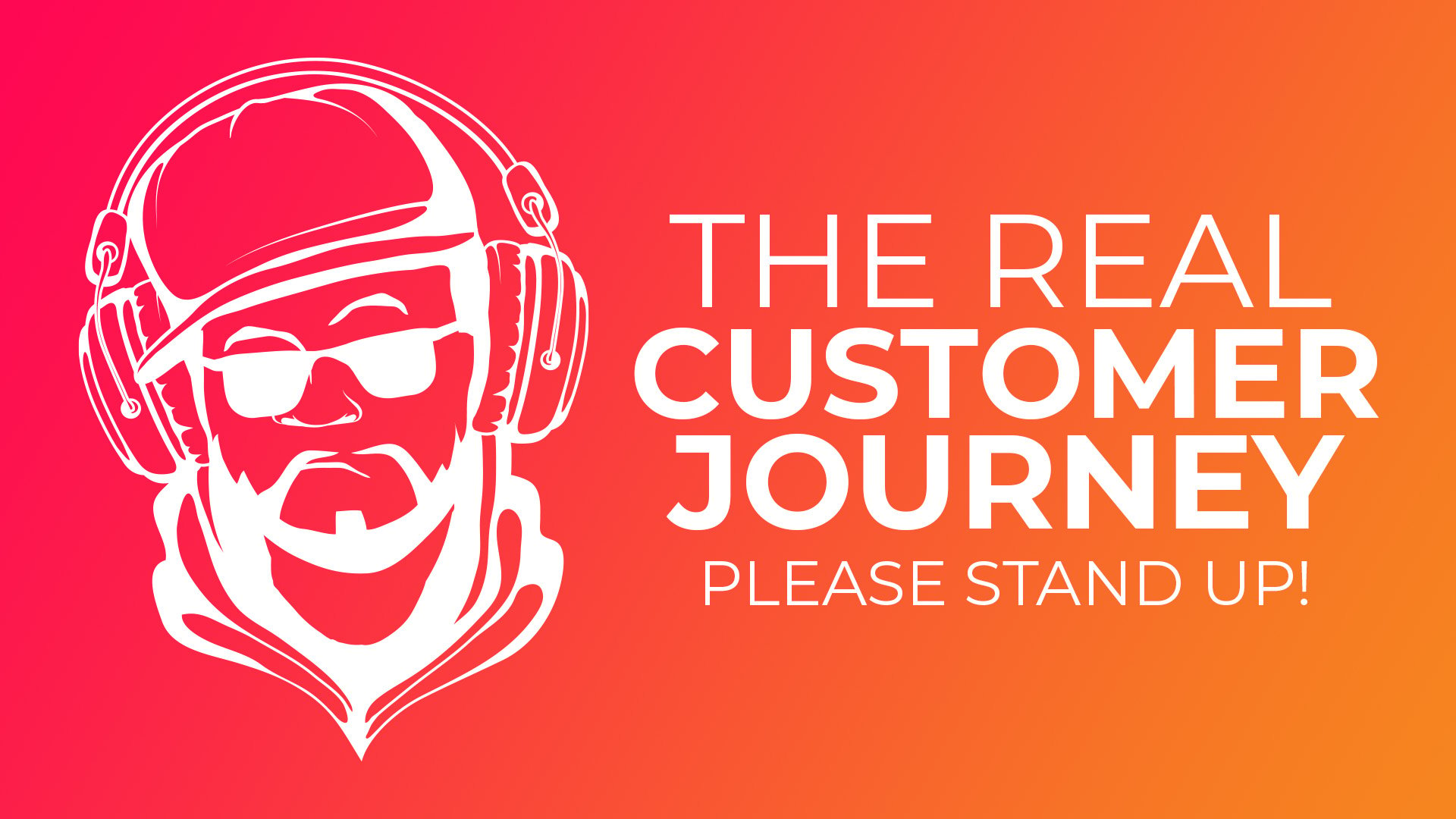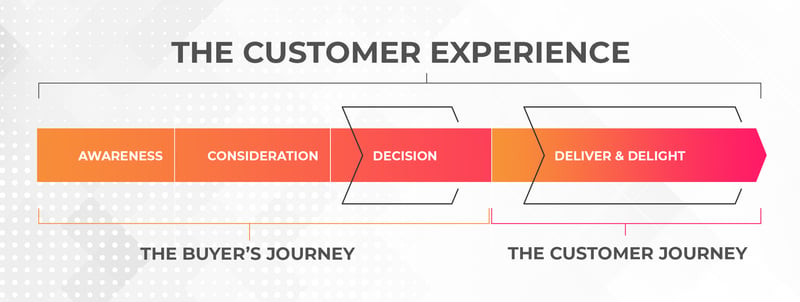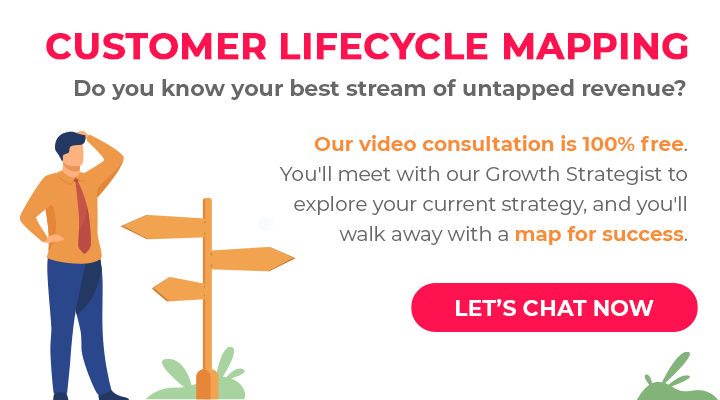The inbound marketing world is great for identifying revolutionary concepts, giving them a name that becomes the newest buzzword, then defining that term differently in every single agency that uses it.
One of the most recent victims of this pitfall is the “customer journey.”
The customer journey concept has recently begun shifting the focus of marketing efforts in companies of all sizes, for good reason.
Unfortunately, not everything that’s being called a customer journey is the same game-changing redirection.

What is the Customer’s Journey?
The customer’s journey includes all of the experiences buyers have with your brand after making a purchase. Targeted content and campaigns designed to entertain, enhance, or enrich the brand experience can foster loyalty, nurture customers into promoters and generate lucrative revenue streams from repeat business.
Unfortunately, not everyone defines that customer journey the same way.
Let’s take a look at the term as used by some major players in the inbound marketing world and what it matters.
The Hubspot Customer Journey
Hubspot’s customer journey is the whole process by which a customer interacts with a company in order to achieve a goal. It’s not immediately obvious but that includes the buyer’s journey and everything that comes before, after, or that ends the journey.
What Does it Look Like:
A very large vector map that divides the journey into three stages: pre-purchase/sales, onboarding/migration, and normal use/renewal.

Each of the “moments” or events within those stages are broken out in order to create a linear map that includes the following vectors:
Factors leading to a positive/negative experience
- Decision points
- Touchpoints
- Hubspotters involved
- Touchpoint volume
Our Take on it
What HubSpot calls the Customer Journey, we call the customer experience. We too value seeing the whole journey (pre and post-purchase) in one big picture. However, by also focusing on the customer’s journey separately from the buyer’s journey, we’re able to better see them as distinctly different experiences with different goals, challenges, and rewards.
HubSpot’s very broad scope may be detrimental to honing in on the post-purchase journey of the customer as one of your biggest opportunities for revenue growth.
The Digital Marketer’s Customer Journey
The Digital Marketer also uses the customer journey term interchangeably with what we refer to as the customer experience, or the traditional buyer’s journey (more or less) plus the customer’s journey.
What Does it Look Like:
The grid map of The Digital Marketer’s Customer Journey includes:
- Awareness
- Engagement
- Subscribe
- Convert
- Excite
- Ascend stage
- Advocate stage
- Promotor Stage
Our Take on it
Before a buyer makes a purchase, they’re not a customer yet. Without breaking up the two, you may not be focusing on the right audience and thinking enough about the needs and pathways of buyers. The post-purchase journey isn’t a very linear experience and requires a shift in mindset.
Impulse Creative’s Customer Journey
Our customer journey is a calculated strategy that begins as the buyer’s journey ends. We use relevant, educational, and entertaining content to strengthen our relationship, promote brand advocacy, and to continue helping our customers to achieve their goals, in every way we can.

The latter can include introducing related products or services as well as helping our customers to better use and understand their current products or services and showing them how to maximize their value.
Most importantly, it’s not driven by the same end-goal or motivation. Ongoing retainers and repeat customers are great, but so is a high Net Promoter Score, a steady stream of referrals, and a growing army of brand promoters.
How do You Know What Customer Journey is Right for Your Company?
The customer’s journey, or the post-purchase portion of the customer’s overall customer experience with your brand, is for every company, no matter what you do or who you do it for.
Your current customers are your most likely future protomers, your most receptive audience, and your richest source of potential future revenue. According to creators of the Net Promoter Score, Frederick Reichheld of Bain & Company, increasing your rate of customer retention by a mere five percent can raise profits between 25% – 95%.
How Do You Map the Customer’s Journey?
Begin mapping your customer’s journey by having a clear understanding of your buyer/customer personas. This foundational direction will help you to better understand what kind of content your customers prefer.
Armed with your buyer personas, sit down with your customer service and sales teams to generate ideas for post-purchase content. The goal here is to find out what your customers want-or-need from your brand after you’ve delivered on your promise.
Questions to Ask When Mapping Your Customer’s Journey
Do they have Frequently Asked Questions or common challenges?
What are the different ways you can help to address those? (video, infographics, pre-purchase content)
What other brands resonate with them and what’s that brand’s customer journey like?
Are your customers creating or sharing post-purchase content about your products or services? Is there a way to encourage and support that effort? Can you learn from it?
What are customers saying or sharing about your brand on social media?
What type of experience or customer generates the most frequent/best reviews?
Who are the influencers in your customer base? How can you support their efforts?
What information do customers find the most valuable post-purchase?
What are the ways they can get deeper involved in your mission and with your brand other than a repeat purchase?
What interesting, entertaining or relevant topics do your customers care most about? How can you put a fresh spin on those topics or offer them via a different medium?
When and why do existing customers make repeat purchases?
What information or education could help to facilitate that journey?
Example of a Well-Rounded Customer Journey
- Branded purchasing experience with follow-up, helpful companion content and, great customer service
- Regular emails with relevant, interesting content related to their purchase and interests
- Regularly updated social media channels where you share new content, promote consumer-generated content and interact with customers
- Relationships with your brand’s top influencers and most loyal audiences
- Sponsorship/participation in the things that are important to your customers
- Regularly-published short, long-form, and video content addressing challenges and needs of your customers post-purchase
- Consistent brand voice and appearance across every platform, making you distinctly recognizable
- Promotions and sales communication for related products and services
Getting Started with Your Customer Journey
Once you’ve compiled a lot of the right questions, gotten reliable answers from the right people, and assessed your current content, you can begin mapping out your own customer journey.
Aim to create a deep well of content made specifically for your buyer personas. Vary both the mediums and the topics while staying within the preference parameters of your personas.
Create a consistent content production and publishing plan that prioritizes your most important/relevant topics, includes existing or reoptimized resources, and fills in any informational gaps you’re aware of.
Start with what you have and build upon it, with realistic S.M.A.R.T. goals that help you to continue an incredible customer experience long after the buyer’s journey ends.





